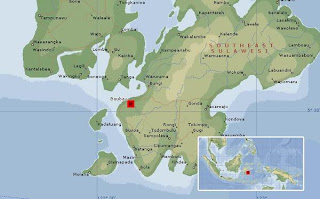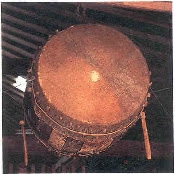The Thousand Fortress of Buton Sultanate
Sunday, April 20, 2008
A historical entity of Buton Sultanate is the Keraton Fortification which built since the 16th century under the reign of Sulton Buton III: La Sangaji (Sultan Kaimuddin). On the early years, the fort are made from pile of stones which placed around the capitol to defend the kingdom from aggressors. Further, the Sultan Buton IV: La Elangi (Sultan Dayanu Ikhsanuddin) upgraded the pile stones into a great thick fortress wall.
This world heritage may tagged with the world’s largest fortress since it has 16 bastions, 12 gates, and also 100 cannons! Yes, the largest ever. In details, the fortress is about 2.740 meters square length, 2-3 meters height, with 1,5-2 meters wall thickness. Locals give another name upon the site as “The Thousand Fort”, because it has many smaller fortresses inside the main fortress.
There were several folklores in accordance with the fort upgrade. Some says that the stones were elaborated each other with tons of eggs. The protein part of the egg. An elder among locals, La Ode Abu Bakar, said that the egg was not the only element whics is used to built up the wall. “It’s almost impossible to gather and stick all those gigantic number of stones. Therefore, they used also calcium and some part of jelly so then they had a thick mixture of adhesive". Hard enough to made a hundred years fortress.

Mosque and the Cemetery
As we step into the fortress, the surroundings would turn backwards in early years when the gold, gospel, and glory were the magical words for European sailors. Wood houses with floor stated 2 meters above the ground, which is called ‘rumah panggung’, spreads around. The dwellers are still considered as the big family of the Sultanate.
The Great Mosque Keraton is the center of the locals activity, also another main attraction instead the fortress. It was build under the order of Sultan Sakiyuddin Darul Alam (Sultan Buton XIX) with 20,6m x 19,4m in large. Philosophically, there are symbolized numbers around this mosque which is associated with some meanings. 313 pieces of wood that made up the mosque were associated as the number of bones of human beings. 17 step ladders of the mosque associated with the number of rakaat in shalat (moslem’s pray) in a day. Also the number 99 of Allah’s name resembled in the length of ‘bedug’ (moslem’s drum).

Not far from the mosque, lies the cemetery of the last king of Buton: Murhum. He was also known as Sultan Kaimuddin. Buton became an Islamic monarchy under his reign since he decided to accept Islam as the religion. The kingdom became Sultanate then.
When you feel wander enough around the site, you may take a lean rest on a beach named Nirvana, located near the fortress. The view? Undoubtedly astonishing!
posted by Daniy @ 10:24 PM,
![]()
